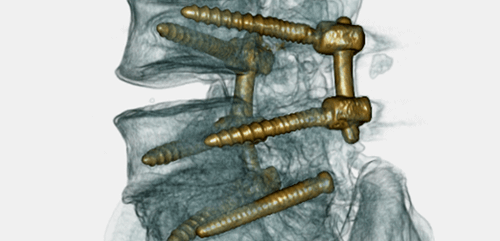The below article was written by Dr. Alfred Bonati, MD, Founder and Chief Orthopaedic Surgeon of The Bonati Spine Institute for The Workers’ Compensation Institute (WCI).
Spinal fusion procedures are not solving the problem, they are creating a problem. Fusions are not something that should be done at all, but the market keeps pushing the fusion because the device manufacturers invest a large amount of money. There are physicians in the field who are teachers at universities, who develop some of these programs, and some of these tools, so they don’t want to lose the income. Between the teachers who continue promoting that surgery in the market and the industry continuing to create the tools to be used, they train more individuals to teach more doctors in the hospitals to do these surgeries. All these elements create a type of cancer that cannot be cut down. The only way to cut it down is with the reimbursement.
To cut down the reimbursement, you need to have another solution because you’re not going to leave the patient with the pain. If you leave the patient with pain, then the patient is going to look for a solution. The doctor is going to offer fusion and the problem will perpetrate by itself. That’s what insurance counts on to happen, so we need to educate the doctors with new procedures.
Unfortunately, the insurance companies have not given full information to the self-insured because the self-insured will give more money to the insurance company to provide lesser care. The insurance company is going to look at a patient who needs a back surgery and determine this back surgery is going to cost a certain amount of money. The patient will often need to have physical therapy after the surgery, will need to have pain management after the surgery, will need to have rehabilitation after the surgery. The individual will need to be out of work, in some of the cases almost a year. With the fusion surgeries, they will need to use instrumentation that often fails in two years. All these elements the self-insured needs to evaluate and put together in comparison to the price the insurance company is telling them they need to pay per surgery. The insurance company is capitalizing on these patients going to have physical therapy and all these other things. The patient is not going to work and because the pain still persists after surgery, then they will need to have drugs. The patient may then develop a drug addiction, and so they need to have rehab for the drugs, and so the expenses increase.
Each patient has a cost and when you add all this up, the treatment is enormously expensive. That expense is what terrifies the self-insured individuals, so they continue maintaining their relationship with the insurance companies and that is why the insurance company can manipulate the price, manipulate the doctors, manipulate the patients, and manipulate the self-insured.
If we have a procedure, that we can prove can get the patient back to work in one week, depending on the problem, we can provide the solution. We’re talking about the working force individual, between 19 years old and 50 years old. Those are the individuals providing service to the country. If we can get those individuals back to work in a couple of weeks, and have no need for medications, no need for physical therapy, no need for pain management, no need for rehabilitation, no follow-up, that patient is immediately back to work.
The Bonati Spine Procedures are proven alternatives to fusions. Our targeted procedures, using patented, precision instruments, are performed on an incremental basis to pinpoint and eliminate the main causes of back or neck pain one level at a time. By using local anesthesia and conscious IV sedation during the Bonati Spine Procedure, the patient is comfortable, responsive, and able to provide feedback to the doctors throughout the procedure, allowing Bonati surgeons to target the source of pain with pinpoint accuracy. They are a completely different type of idea from other procedures offered anywhere else in the world.
We need to avoid the fear that the insurance company puts on the self-insured so they can beef up the price and only offer poor procedures. We understand the insurance company doesn’t want to treat a patient with the back pain. We understand an employer doesn’t want a patient that had back surgery, but those patients are great. We can treat them. It’s a mechanical problem. It’s an easy solution. If you know what the problem is, you can fix the problem and the patient is ready to go back to work. But if you don’t know how to fix the problem, you have a bigger problem.
We need to help the patients and insurance providers understand that the problem is pure mechanics. We need to provide results that indicate outcomes are real. The Bonati Spine Institute is now in a process to do a study with Wake Forest University to take our patient results data and compare the results with other outcomes. We want to really look that the results are acceptable and satisfactory by the patient; that there are no complications, no infections, no death, and they offer a very fast return to work. All these elements combined will inform the people managing the insurance companies.
Currently, more than half our patients come to us after failed surgeries from other facilities. We have a 98.75% patient reported satisfaction rate at the Bonati Spine Institute, and we are so fortunate to help these patients restore their lives.
The Workers’ Compensation Institute (WCI) is a nonprofit educational organization that serves as a comprehensive resource to all workers’ compensation stakeholders. The WCI is an outgrowth of the long-established Florida Workers’ Compensation Institute. FWCI remains in existence under the WCI umbrella and continues its Florida focus, while the national organization provides a broader outreach across all states.

